 Last Updated February 9, 2025
Last Updated February 9, 2025
The most common Vitamix shopper’s question is some variant of, “I want to make smoothies, soups, and frozen desserts. Which Vitamix blender is best for me?” The answer is that all Vitamix machines work great for those tasks; which one is best depends on the volumes you want to blend and whether you want to pay for extra features.
If you don’t want to go through the nitty-gritty, here are my quick Vitamix recommendations:
Which is the best Vitamix model?
Best Value
- E310 (short/narrow container for small to medium amounts)
- Recon 5200 (tall/narrow container for small to large amounts)
- Recon E320 (short/wide container for medium to large amounts)
Money Is No Object
- Ascent X5 (latest and greatest)
The February 2025 shopping landscape
Most Vitamix models are on sale through Feb 22nd for the President’s Day Sale. Here is the sale.
Vitamix recently released a new set of Ascent models. Full details are in my Vitamix Ascent X Series Review.
The Food Processor Attachment gives more reason to consider Ascent and Venturist models, since it is not compatible with classic models. If you don’t care about the premium finish of the A3500, consider saving big on the Reconditioned Venturist.
If you are looking for the lowest possible price, I recommend choosing between the Recon 5200, the E310, and the Recon E320. The most significant difference between these models is the container they come with, so use the following Venn diagram to pick the optimal container for you. There are trade-offs between the three container options. To put it briefly, “short, narrow, or large capacity: pick 2”: 
Note to visitors from outside the United States: The model availability described on this page is for the USA (and APO/FPO addresses). If you are shopping from Canada, check out my page about Canadian Vitamix models.
For most people, I recommend choosing from the following four categories: Certified Reconditioned models, Explorian, Premium Classic, and Ascent.
Reconditioned
 If you are looking for the lowest possible price on Vitamix, reconditioned is for you. Some people are hesitant to buy reconditioned, and that is a valid concern with some companies, but Vitamix’s reconditioned units are guaranteed to be top quality. The only reasons I would avoid reconditioned Vitamix are if it is for a gift for someone who won’t understand, or if you want some of the features not available on reconditioned machines.
If you are looking for the lowest possible price on Vitamix, reconditioned is for you. Some people are hesitant to buy reconditioned, and that is a valid concern with some companies, but Vitamix’s reconditioned units are guaranteed to be top quality. The only reasons I would avoid reconditioned Vitamix are if it is for a gift for someone who won’t understand, or if you want some of the features not available on reconditioned machines.
Explorian
 If you prefer a slightly smaller container, I highly recommend the new E310, which comes with a short and narrow 48-oz container (full review). The Explorian E320 is functionally identical to the E310, but it comes with a wide container. That makes it nearly identical to the 5300. (The E320 replaces the 5300 in the model lineup, and it is mostly the same, with a few changes: it does not have the on-off switch on the side, and it does not light up when on. I don’t think these differences matter much, but there they are for anyone wondering about E320 vs. 5300.)
If you prefer a slightly smaller container, I highly recommend the new E310, which comes with a short and narrow 48-oz container (full review). The Explorian E320 is functionally identical to the E310, but it comes with a wide container. That makes it nearly identical to the 5300. (The E320 replaces the 5300 in the model lineup, and it is mostly the same, with a few changes: it does not have the on-off switch on the side, and it does not light up when on. I don’t think these differences matter much, but there they are for anyone wondering about E320 vs. 5300.)
There is now also an Explorian E520, which comes with the wide 64-oz container and adds 3 preset blending modes. With the hidden discount that gets activated after clicking a Vitamix link on this site and then adding the Recon E520 to your shopping cart, it is an excellent deal.
Premium Classic and Propel
If you want the most premium machine, but don’t want the new technology of Ascent, then the Professional Series 750 is for you. I think the Ascent machines are quite nice, but you might not like the look of their digital display, or you might want to be able to use older containers (without NFC chips).
In 2023 Vitamix released a new Series, which they are calling the Propel. Similar to the Pro 750, these machines have preset modes and a secondary on-off switch. The Propel machines also have the subtly updated styling that was released with the Explorian series: Propel 510 and Propel 750.
Ascent (Smart System Blenders)
If you want to buy into the future of Vitamix, the Ascent Series is the way to go. It’s priced in the same range as new Legacy models, but it comes with various upgrades (among them: longer warranty, timer display, can use small cups without bulky adapter, and a wireless connection to smartphone app).

 Within the Ascent Series, the A2300 is the lowest-priced model and it has everything you need. (If you’re buying reconditioned, the A2500 is the lowest-priced model, and it has all the features of the A2300, including full variable speed control, and it adds 3 preset program modes.) If you feel like upgrading, I recommend going all the way up to the A3500, because it has premium finish options. (I’m not saying that the intermediate Ascent models are a bad choice, they just wouldn’t be my choice.) See my Ascent review page for more details.
Within the Ascent Series, the A2300 is the lowest-priced model and it has everything you need. (If you’re buying reconditioned, the A2500 is the lowest-priced model, and it has all the features of the A2300, including full variable speed control, and it adds 3 preset program modes.) If you feel like upgrading, I recommend going all the way up to the A3500, because it has premium finish options. (I’m not saying that the intermediate Ascent models are a bad choice, they just wouldn’t be my choice.) See my Ascent review page for more details.
If you’ve been putting off getting a Vitamix because you’re saving up, you can get one right away with a payment plan. If you make on-time payments, there are zero financing fees.
You can leave a comment below or contact me if you are still having trouble deciding which one to get.
Comparison of pre-Ascent models follows
If you want to quickly see the relation between all of the different Vitamix models, you can jump ahead to my comparison chart.
I made an interactive tool to help explore the different features. Try playing with it to get a sense of which you are interested in. You can click any model to go to its Vitamix.com page, or you can read more about the different models below.
+ Show model selection tool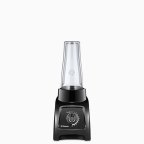 Recon S30
Recon S30  Recon 2-Speed
Recon 2-Speed  Recon 5200
Recon 5200  Recon 5300
Recon 5300  Recon Pro 500
Recon Pro 500 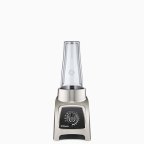 Recon S55
Recon S55  S30
S30  2-Speed
2-Speed 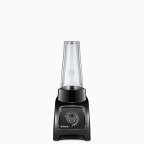 S50
S50  Recon 7500
Recon 7500  5200
5200  S55
S55 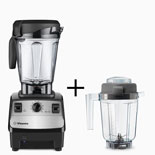 Recon 5300 + 32oz
Recon 5300 + 32oz  Recon Pro 750
Recon Pro 750  7500
7500  Pro 500
Pro 500  Recon 7500 + 32oz
Recon 7500 + 32oz  Pro 750
Pro 750 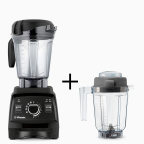 Recon Pro750+32oz
Recon Pro750+32oz  7500 + 32oz
7500 + 32oz  Pro 750 + 32oz
Pro 750 + 32oz  780
780 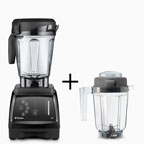 780 + 32oz
780 + 32oz(If you want the 32-oz container, you have to add it to your cart separately: 32-oz container link)
If you’re overwhelmed by the choices and just want to know my preference, I’ve used all of the different types of Vitamix blenders, and before I started using Ascent, the one I used on a daily basis was the 7500, with an extra 32-oz container for blending smaller amounts. (For the best deal, check out certified reconditioned.) All of the models are excellent, and I don’t think there is a wrong choice. (Plus, if you change your mind in the first 30 days, you can get a full refund, including free shipping both ways.)
Summary of Differences
These are the five key decisions to make when deciding which Vitamix to buy:
The following comparison chart shows the relations between the different machines in the S-Series, C-Series, and G-Series. The machines within most boxes of the chart are identical, but they come with different accessories and cookbooks (the exceptions are the S50 and S55, where the S55 has 2 more presets than the S50, and the Pro 750 and Vitamix 780, where the 780 has a flat touchpanel control). Generally the differences in accessories/cookbooks are pretty marginal, so I’d recommend going for the lowest price model within the box.

(“+” indicates there are also more expensive options in addition to the price listed in the chart. The following machines are not shown because they do not fit in with the rest: the Vitamix Turboblend Two Speed and Three Speed lack variable speed control, and the Vitamix 5300 and 6500 are a hybrid of the 6300 and 7500—i.e. they have a 7500 container on a 6300 base, without or with presets.)
Personal Blender? (S-Series vs. C-Series and G-Series)
(Vitamix S30 and S55 vs. 5200, 7500, et al.)
 In 2014 Vitamix released the Vitamix S30. It is smaller than the other Vitamix models, and also comes with a combination blending container/to-go smoothie cup. The Vitamix S50 and Vitamix S55 came out in 2015, and they are the same as the S30 but add preset modes. Since these models are significantly different from all the other models, I put up a detailed Vitamix S30 and S-Series review. If you are considering a smaller blender, or like the idea of blending in a to-go smoothie cup, you should check them out. Not surprisingly, the S-Series’ smaller size means that their maximum capacity is lower the other models (40 oz vs 64 oz).
In 2014 Vitamix released the Vitamix S30. It is smaller than the other Vitamix models, and also comes with a combination blending container/to-go smoothie cup. The Vitamix S50 and Vitamix S55 came out in 2015, and they are the same as the S30 but add preset modes. Since these models are significantly different from all the other models, I put up a detailed Vitamix S30 and S-Series review. If you are considering a smaller blender, or like the idea of blending in a to-go smoothie cup, you should check them out. Not surprisingly, the S-Series’ smaller size means that their maximum capacity is lower the other models (40 oz vs 64 oz).
Variable Speed?
(Vitamix Two Speed vs. 5200 and Vitamix 6000 vs. 6300)
 The variable speed control found on all Vitamix machines except for the Two Speed and 6000 is useful for when you don’t want to fully liquefy your blend. Examples are pesto, salsa, or chopping vegetables. If you don’t have variable speed, you can get away with quickly pulsing, but you won’t have quite as much control. The variable speed also makes the “bubble removal trick” more effective, although pulsing on low speed also works.
The variable speed control found on all Vitamix machines except for the Two Speed and 6000 is useful for when you don’t want to fully liquefy your blend. Examples are pesto, salsa, or chopping vegetables. If you don’t have variable speed, you can get away with quickly pulsing, but you won’t have quite as much control. The variable speed also makes the “bubble removal trick” more effective, although pulsing on low speed also works.
Preset Programs?
(Vitamix Two Speed vs. 6000, Vitamix 5200 vs. 6300, Vitamix Professional Series 200 vs. Professional Series 500, Vitamix S30 vs. S55, and Vitamix Professional Series 300 vs. Professional Series 750)
 The preset programs on the 6000, 6300/Pro 500, S55, and Pro 750 allow you to select a program, turn it on, and then the machine will automatically ramp up the speed and then shut off after a certain amount of time. There are a number of reasons that people appreciate this function:
The preset programs on the 6000, 6300/Pro 500, S55, and Pro 750 allow you to select a program, turn it on, and then the machine will automatically ramp up the speed and then shut off after a certain amount of time. There are a number of reasons that people appreciate this function:
• You can start the machine and “walk away” to do something else.
• If you strictly follow recipes the presets can yield more consistent results.
• Presets can give new users more confidence with the machine.
However, the presets do not work perfectly every time. Sometimes ingredients require tamping to start circulating past the blades, so you can’t always “walk away.” Also, the preset time might not be the optimum blending time if you modify a recipe. You may find that your smoothie is not fully blended after the smoothie program runs, so you have to run it again. A commercial coffee or smoothie shop makes the same recipes over and over, so in that setting presets are extremely useful. If you constantly make new combinations and of differing amounts, as many home users do, the settings may be less useful. It’s not too hard to tell when something is sufficiently blended, and after a few trials anyone should be able to figure it out. For these reasons, I personally would not pay extra for the preset settings. However, I know many people who have the presets love them. One thing to remember is that the machines with presets still have the variable speed knob for full manual control. If you don’t mind the added cost of presets, you can always switch back and forth to manual control.
C-Series vs. G-Series (Next Generation)?
(Vitamix 5200 vs. 7500, and Vitamix Professional Series 500 vs. Professional Series 750)
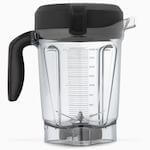 Vitamix released the “Next Generation,” aka “G-Series,” models in 2012. Both the base and the pitcher have an updated design. The base has slightly better sound muffling and also has better airflow which means that it can work harder before it overheats. To go with the better-cooled motor, the updated pitcher has a 4-inch blade instead of the Standard/Classic “C-Series” 3-inch blade. The 4-inch blade is in a shorter and wider container that has the same capacity as the 64-oz C-Series container.
Vitamix released the “Next Generation,” aka “G-Series,” models in 2012. Both the base and the pitcher have an updated design. The base has slightly better sound muffling and also has better airflow which means that it can work harder before it overheats. To go with the better-cooled motor, the updated pitcher has a 4-inch blade instead of the Standard/Classic “C-Series” 3-inch blade. The 4-inch blade is in a shorter and wider container that has the same capacity as the 64-oz C-Series container.
Advantages of the wider design:
• less need for the tamper (ingredients fall into the blades more easily)
• better chopping capability (you can course-chop more ingredients at a time)
• easier to scrape thick mixtures out
Advantage of shorter design:
• easier storage (at 17.5” tall, the container with lid on the base fits under standard kitchen cabinets)
Advantages of the 4-inch blade:
• faster processing time
• under some circumstances, marginally smoother blends
The one disadvantage of the new container is that for small volumes of under ~2 cups it does not work quite as well as the C-Series narrow container. The G-Series wider design causes two things to happen. First, there is more splashing up onto the inside of the lid and upper walls of the container, which means you lose a small amount of your blend unless you carefully scrape off the lid and walls. Second, you need slightly more volume to cover the blades and get good circulation going. The minimum volume to blend depends on what you are blending, and also on how much effort you are willing to spend pushing ingredients back into the blades. For example, for best results, the narrow containers can make nut butter easily by starting with 3 cups of nuts, whereas the wider Next Generation containers do best with 4 cups of nuts. For easier, more liquidy, blends, you can go below 1 cup in either container, but Next Generation containers will splash around more.
This disadvantage is a non-issue if most of your blends are over 2 cups, or if you are willing to spend a bit more to buy an additional narrow container, which will give you the best of both worlds. I like the 32-oz container for this purpose, although the 48-oz container has the same narrow bottom so it works just as well. The 48-oz container is just a bit bulkier on the outside because it sits outside the centering posts instead of inside of them, and its top is wider as well.
(The narrow C-Series Vitamix containers are compatible with G-Series models, but the G-Series containers are not recommended for use on C-Series models. The longer G-Series blades increase the load, and Vitamix does not recommend the C-Series cooling system for those increased loads.)
Reconditioned?
 Buying reconditioned is a great way to save money. For more details on deciding about buying reconditioned, see my refurbished Vitamix page.
Buying reconditioned is a great way to save money. For more details on deciding about buying reconditioned, see my refurbished Vitamix page.
Continue on for more details of each model type…
The array of different Vitamix blenders is a bit confusing, but it turns out that there is a lot of redundancy between the different models. I am only discussing models made for consumer/home use. Their commercial blenders are not ideal for home use because they are generally more expensive and have shorter warranties (3 years vs 7 years for home use; they are warrantied for constant use—think of how many times per day a blender at Jamba Juice runs compared to at your home).
The Vitamix website currently lists over 30 different home models, but they are all variants of three main designs: “personal” (S-Series), “standard/classic” (C-Series), and “next generation” (G-Series). For each of these main designs there are a few different options, to make a total of 8 different machine types. The rest of the models have identical bases, but come with different containers and/or accessories.
S-Series Motors
If the smaller size, dishwasher safe container, and “to-go” blending container appeal to you, please read the full details at my Vitamix S30, S50, and S55 review. For quick reference, the size of the base is 8.3″ deep x 5.9″ wide x 7.7″ tall. With the 20-oz to-go container the total height is 14.55″. The height is 15.66″ with the 40-oz container. These models have lower power, but they are still capable of making all of the usual Vitamix creations, just in smaller quantities.
C-Series Motors (Standard/Classic)
There are three types of bases of the standard variety. The differences are in the controls. The dimensions of the base of these machines are 8.75″ deep x 7.25″ wide x 8.25″ tall. There are three different container size options: 32 oz, 48 oz, and 64 oz, which result in height of base plus container/lid of 16.9″, 17.4″, and 20.5″ respectively.
Standard, no-variable speed (Vitamix TurboBlend Two Speed and Three Speed)
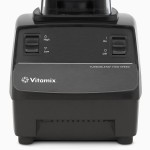 TurboBlend Two Speed (
TurboBlend Two Speed ($399$349); reconditioned for $299. This machine comes with a 5-year warranty and lacks the variable speed knob. Variable speed is useful for cases where you want to have finer control over the texture (i.e. if you don’t want a totally smooth purée). However, you can accomplish some non-liquefying chopping tasks by quickly pulsing the machine. While this is the most affordable new machine, I’d highly recommend looking at the reconditioned 5200, which has the same warranty and adds variable speed for $70 less.
In May 2016 Vitamix came out with a new no-variable speed machine, the TurboBlend Three Speed($499). It is exactly what it sounds like: it has three speed settings: low, medium, and high. It also has a pulse switch, which does the same thing as switching the start-stop button on and off. The pricing on this model is a bit strange, since for $50 less you can get a machine with fully variable speed. Plus, the TurboBlend 3-Speed comes with a 5-year warranty, instead of the 7 years on machines like the 5200.
Standard variable speed (Vitamix 5200 et al.)
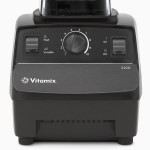 Until recently this was Vitamix’s bread and butter, and they have a lot of models to show for it: 5200 ($449), TurboBlend VS (retired), CIA Pro (retired), Pro 200 ($499), Creations II ($449), and Creations GC (retired); reconditioned for $329. These machines are essentially identical. Some are available with a shorter 48-oz container instead of the 64-oz container. The smaller container is nice because it’s more compact (and fits under standard kitchen cabinets), but of course its capacity is lower. The aesthetics of the switches and dial are slightly different between the different models. The Creations models come with a 5-year warranty, while the rest are 7 years. The 5200 comes with their “whole foods cookbook,” the TurboBlend VS comes with a vegetarian/vegan/raw cookbook and a nutmilk straining bag, the Pro models come with a cookbook with restaurant-oriented recipes (the CIA one—that’s Culinary Institute of America—comes with an additional recipe book). Note that if you buy reconditioned, you cannot choose which of the Standard models you are getting; Vitamix will choose for you based on availability, but remember that functionally they are identical.
Until recently this was Vitamix’s bread and butter, and they have a lot of models to show for it: 5200 ($449), TurboBlend VS (retired), CIA Pro (retired), Pro 200 ($499), Creations II ($449), and Creations GC (retired); reconditioned for $329. These machines are essentially identical. Some are available with a shorter 48-oz container instead of the 64-oz container. The smaller container is nice because it’s more compact (and fits under standard kitchen cabinets), but of course its capacity is lower. The aesthetics of the switches and dial are slightly different between the different models. The Creations models come with a 5-year warranty, while the rest are 7 years. The 5200 comes with their “whole foods cookbook,” the TurboBlend VS comes with a vegetarian/vegan/raw cookbook and a nutmilk straining bag, the Pro models come with a cookbook with restaurant-oriented recipes (the CIA one—that’s Culinary Institute of America—comes with an additional recipe book). Note that if you buy reconditioned, you cannot choose which of the Standard models you are getting; Vitamix will choose for you based on availability, but remember that functionally they are identical.
Sometimes these models are listed with their color-specific SKU. All of the following models are identical to the 5200, they just come with different colors and names: Vitamix 1709, 1363, 1364, 1365, 1709, 1723, 1732. They also sometimes go by VM0103. Vitamix 1978 is also the same, but comes with a 48-oz container.
Standard variable speed + presets (Vitamix 6300 and Professional Series 500)
 Pro 500 ($559) and 6300 (retired); reconditioned for $379. These are the same model; the only difference is that the 6300 comes with the “Savor” cookbook, which has a broader range of recipes than the Pro 500’s “Create” cookbook, which focuses more on restaurant-style recipes that tend to be richer.) They have 3 preset programs that run the blender for a certain amount of time and speed for smoothies, frozen desserts, and hot soups. Their switches are slightly different from the non-preset models. The non-preset models have an on-off switch, a variable speed knob, and a high-variable speed switch. The preset ones have moved the highest speed setting onto the knob and replaced the high-variable speed switch with a pulse switch. This is really a minor aesthetic difference, since you can achieve pulsing on the non-preset models by quickly flicking the on-off switch on and off.
Pro 500 ($559) and 6300 (retired); reconditioned for $379. These are the same model; the only difference is that the 6300 comes with the “Savor” cookbook, which has a broader range of recipes than the Pro 500’s “Create” cookbook, which focuses more on restaurant-style recipes that tend to be richer.) They have 3 preset programs that run the blender for a certain amount of time and speed for smoothies, frozen desserts, and hot soups. Their switches are slightly different from the non-preset models. The non-preset models have an on-off switch, a variable speed knob, and a high-variable speed switch. The preset ones have moved the highest speed setting onto the knob and replaced the high-variable speed switch with a pulse switch. This is really a minor aesthetic difference, since you can achieve pulsing on the non-preset models by quickly flicking the on-off switch on and off.
Some people love the presets because you can set it and walk away (assuming the mixture is circulating and you don’t need the tamper), and because they get more consistent results. However, the more consistent results will only hold if you always add the same quantities and types of items to the blender. For example, if you’re making a small smoothie, you can blend it for less time than if you were making a large one. One other thing is that you can set the non-preset machines and walk away—you just have to come back to stop them. I often use the blending time to rinse off the knife and cutting board that I used. You’re not likely to forget that the Vitamix is running because it’s loud enough to hear throughout the house. The variable speed knob goes to the same high speed as the previous models on high, but it’s lowest setting is a bit faster than on the 5200 et al., so you lose a tiny bit of fine control. Whether the presets are worth it is a personal question—I wouldn’t pay extra for them, but some people love them.
Standard no variable speed + presets (Vitamix 6000)
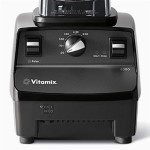 6000 (retired). Released October 2013, this is more of a mash-up of existing machines than a truly new one. It’s a sort of blend between the Two Speed, and the 6300. It does not have variable speed control, but it has six preset timed blending settings. These settings will automatically ramp up the speed, and then turn it off after a specified time of 20 sec, 30 sec, 1 min, 1.5 min, 4.5 min, or 6.5 min. Like the 6300, the pulse control is spring-loaded so that it only stays on as long as you hold it down, and it blends at a medium-low speed.
6000 (retired). Released October 2013, this is more of a mash-up of existing machines than a truly new one. It’s a sort of blend between the Two Speed, and the 6300. It does not have variable speed control, but it has six preset timed blending settings. These settings will automatically ramp up the speed, and then turn it off after a specified time of 20 sec, 30 sec, 1 min, 1.5 min, 4.5 min, or 6.5 min. Like the 6300, the pulse control is spring-loaded so that it only stays on as long as you hold it down, and it blends at a medium-low speed.
G-Series Motors (Next Generation)
In 2012 Vitamix released a new generation G-Series base with improved airflow that makes it run cooler and quieter than the classic C-Series one. With the improved cooling, the G-Series base can use a new pitcher design that is wider and has longer blades. This design makes the tamper less necessary, and makes it easier to get thick mixtures out. The longer blades also process food faster and work better for chopping. The G-Series machines are compatible with the C-Series containers, so if you want to use the dry blade you can use the same classic dry container. Dimensions are 9.4″ deep x 7.7″ wide x 17.5″ tall (with new-style 64-oz container in place). For more details of sizes, check out the PDF footprints I made for my Vitamix S30 review.
Next generation motor (Vitamix 7500, Professional Series 300, and Creations Elite)
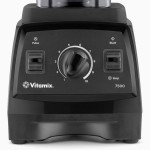 7500 ($529), Creations Elite ($557.50), and Pro 300 ($559); reconditioned for $439. These are all the same machine, so don’t worry about the note on the Reconditioned Next Gen page that says that the label may reflect any of these models. The only difference is the name printed on it. One point of confusion is that the Creations Elite is sold new with a smaller container, but if you happen to get sent a Creations Elite as a Reconditioned Next Gen, it will come with the same low profile 64-oz container that the 7500 comes with.
7500 ($529), Creations Elite ($557.50), and Pro 300 ($559); reconditioned for $439. These are all the same machine, so don’t worry about the note on the Reconditioned Next Gen page that says that the label may reflect any of these models. The only difference is the name printed on it. One point of confusion is that the Creations Elite is sold new with a smaller container, but if you happen to get sent a Creations Elite as a Reconditioned Next Gen, it will come with the same low profile 64-oz container that the 7500 comes with.
Next generation motor + presets (Vitamix Professional Series 750 and Vitamix 780)
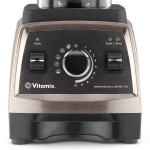
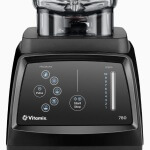 Pro 750 ($599–$649), 780 ($719); available reconditioned: 750 for
Pro 750 ($599–$649), 780 ($719); available reconditioned: 750 for $519–$569$499, and 780 for $519$399. These models have 5 presets: smoothies, frozen desserts, purées, hot soups, and self-washing. If you want to see more details of exactly what the presets do, check out my page about demystifying Vitamix presets. The 780 is identical, except that it has a touchpanel control interface. See my Vitamix 780 review for more details.
Vitamix Heritage 750 vs. Original 750?
In late 2015, Vitamix released a new version of the Pro 750: the Heritage line. The Vitamix Heritage 750 is functionally equivalent to the original Pro 750, but it has two differences on the exterior of the base. The upper shell (see diagram below) is now metal on the Heritage models. The Vitamix website doesn’t put Heritage in the model title, but it’s there in the description.
 The original 750 came in a brushed stainless finish option, but the upper shell was plastic with a thin metallic coat that could be scratched or scuffed. (When I tested the original 750 for a couple of months, I did not see any problems, but I have heard that some people have noticed scratches/scuffs.) The solid metal of the new Heritage models is more durable. Also, the metal shell muffles the the motor a bit more than the plastic, making the Heritage models a bit quieter.
The original 750 came in a brushed stainless finish option, but the upper shell was plastic with a thin metallic coat that could be scratched or scuffed. (When I tested the original 750 for a couple of months, I did not see any problems, but I have heard that some people have noticed scratches/scuffs.) The solid metal of the new Heritage models is more durable. Also, the metal shell muffles the the motor a bit more than the plastic, making the Heritage models a bit quieter.
 The other minor difference is that the Heritage models’ front panel has fewer backlights: Heritage models light up the indicators above the pulse and start-stop switches, whereas the original Pro 750 has backlights around the central knob as well.
The other minor difference is that the Heritage models’ front panel has fewer backlights: Heritage models light up the indicators above the pulse and start-stop switches, whereas the original Pro 750 has backlights around the central knob as well.
The Heritage metal is available in brushed stainless and copper finishes. (Currently on Vitamix.com, the Heritage options are listed on the main Pro 750 page, and the old brushed stainless finish is discontinued.)
I believe it is called Heritage because it is a throwback to the original Vitamix models that had all-metal bases. The plastic that Vitamix has been using for their bases for the past 25 years is extremely durable, so this change won’t affect functional longevity. That said, the elegant finish of the Heritage models will now likely stay unblemished for longer. It’s also nice that Vitamix did not increase the price for this upgrade.
The Vitamix 5300 and 6500
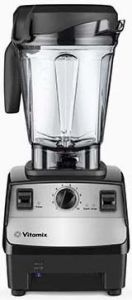 5300 ($529) and 6500 ($599); reconditioned for $360. Vitamix does not currently sell the new models online, only the reconditioned one. These are “new” models for 2015, although they are actually just slightly unexpected mash-ups of previous models. They are a hybrid between a 6300 and a 7500. They use the wide Next Gen (G-Series) container but they have a Classic (C-Series) base. The 5300 has variable speed and a pulse control switch, and has no presets. Meanwhile, the 6500 has the same three presets as the 6300. (Further evidence of equivalence between the 5300/6500 and C-Series models is on the Reconditioned C-Series 6300/Pro 500 page: it says its base may be a 6500.)
5300 ($529) and 6500 ($599); reconditioned for $360. Vitamix does not currently sell the new models online, only the reconditioned one. These are “new” models for 2015, although they are actually just slightly unexpected mash-ups of previous models. They are a hybrid between a 6300 and a 7500. They use the wide Next Gen (G-Series) container but they have a Classic (C-Series) base. The 5300 has variable speed and a pulse control switch, and has no presets. Meanwhile, the 6500 has the same three presets as the 6300. (Further evidence of equivalence between the 5300/6500 and C-Series models is on the Reconditioned C-Series 6300/Pro 500 page: it says its base may be a 6500.)
The reconditioned 5300 is the most affordable option for a machine with the short/wide container.
The strange thing about these models is that previously Vitamix stated that Next Gen containers should not be used on Classic bases because they do not have the updated airflow design that cools the motor more effectively.
I strongly suspect that the 5300 has the same microprocessor speed control as the 7500, Pro 750, and 6300, just without the presets. (You can read about the speed control of the different machines on my Vitamix RPM measurement page.) The microprocessor speed control should help protect the motor when using the wide container at high loads and very low speeds, but at maximum speed it shouldn’t make a difference. The marketing copy for the 5300 says that it comes “with a faster, yet quieter, motor,” but I am skeptical of those claims [Update: interestingly, Vitamix removed that phrase].
The 5300 and 6500 are a bit louder than the G-Series bases, which have sound-dampening technology not present in the C-Series bases. At the same price point, I would prefer the 7500.
Satisfaction Guarantee
Vitamix has a 30-day satisfaction guarantee, so if you have second thoughts you can return a machine within the first 30 days for a full refund and they even pay return shipping.
Warranty
If your machine has any problems during the warranty period of 5 or 7 years, Vitamix will repair or replace it, and they cover shipping costs both ways. For more details about warranties, check out my Vitamix Warranty page.
Reconditioned Vitamix
 I know I already mentioned reconditioned machines, but I want to restate what a great deal I think they are. These factory-refurbished machines offer the best prices you’ll find on Vitamix: 5200 for $329, Pro 500 for $379, and 7500 for $439. For more details, see my refurbished Vitamix page.
I know I already mentioned reconditioned machines, but I want to restate what a great deal I think they are. These factory-refurbished machines offer the best prices you’ll find on Vitamix: 5200 for $329, Pro 500 for $379, and 7500 for $439. For more details, see my refurbished Vitamix page.
Payment Plans
Want to start blending right away, but don’t want to pay the full price up front? Vitamix offers payment plans with zero interest and no fees if you make payments on time. For more information, check out my payment plan page.
Free Shipping
Clicking on any Vitamix link on this page will automatically apply a promotion code, which gives you free shipping on your order of a Vitamix machine (or anything else on Vitamix.com over $50) in the U.S. or Canada. For more details, see my page about the Vitamix promotion code.
Extra Bonus
If you order via a link on this site, Joy of Blending can get a commission. I deeply appreciate your support, and, to thank you, I want to help you get the most out of your new machine. I try to answer all questions from everyone, but sometimes I get swamped. If you order through one of my links, I will give you a private way to contact me so that I can answer your questions before visitors who are not on the special list. Please make sure my link is the last link you click before placing your Vitamix.com order. Then just forward your order confirmation to thanks@joyofblending.com.
Recommended Accessory
I highly recommend a spatula for getting the last bits of thick mixtures out of the container. For the narrow containers I recommend a long narrow spatula. For the wide containers, I recommend Vitamix’s under-blade scraper.
Dry Container
If you’re wondering if you should get a dry container, this new post is for you: Is the dry container worth it?
Phew… so that completes the Vitamix model round-up. I’m looking forward to getting back to describing some actual recipes!
Or follow along on Twitter or Facebook:

Thanks for all the great 411 and time you put into this site! Bought a reconditioned 7500 after learning of it in your November post. One thing I’m wondering about: Do you know of any table for translating between the variable speed numbers for 5200 etc and 7500? 10 is top speed for 7500 but not for the other models. Further complicating things is the larger blade diameter of the 7500–linear velocity at the blade tip will be much higher with the larger blade for the same angular velocity, so we have three Vitamix-approved variable speed combinations: traditional model/traditional blade, new model/new blade, and new model/traditional blade. I won’t be using recipes often, but do have some with very specific variable speed settings for traditional models I’d like to try…
Thanks again!
Excellent question. There is no translation table that I know of. I have been working on making one, but I haven’t finished yet. It’s a tricky conversion because it depends on what you are blending. The good news is that for most things the exact speed is not super critical, and you can generally adjust things by eye. I’ve been telling people that an approximation is to subtract 2 from the variable speeds, and shave off 20% of the processing time when using a Next Gen machine with a Standard recipe. (That is with the new model/new blade; with the new model/standard blade I’d start with subtracting 1 from the variable speed and not changing the time.)
Thank you, Adam. That is helpful. Forgot to ask my other question in my prior post, so here goes: I’m wondering about the “start at Variable 1 and gradually increase” element of the Vitamix instructions. I have seen reasons for this ranging from protecting the motor to preventing splashing. I’ve also noticed that the Vitamix folks ignore the “gradually” part and crank it to 10 as fast as they can. The reason I’m pondering this issue is following the instructions literally would seem to eliminate the benefit of the Pulse button. So, what is your feeling of using Pulse with the speed dial set to 8 or 10 or whatever is convenient?
I appreciate the input!
This is another interesting subject that I’ve been meaning to address in more depth at some point. You are right about the reasons for ramping up the speed. The main thing is to minimize splashing. I am not sure if ramping up the speed is easier on the machine, but there are plenty of people who think it is. My suspicion is that it doesn’t actually make much difference, but I haven’t found a good source to back that up yet.
The pulse switch is identical to flipping the on-off switch, it’s just more convenient. I’ve noticed that the Next Gen machines actually do a slight ramp-up of speed when you start on a variable speed of above ~3 (whereas the Standard models immediately start at whatever speed you have it set to). I presume they implemented this to reduce chances of launching the contents of the container.
I’m not exactly sure what you’re asking about the pulse switch, but I don’t think you should be afraid to use it.
If you’re wondering about the utility of the pulse button, (i.e. why would you want to start fast without ramping up gradually), it depends on what you’re blending. There are some things where having a more violent start can help get the blending going more easily. Also, the pulse switch can be convenient for when you only want to blend for a very short time.
Thanks once again; sorry I wasn’t entirely clear. I was thinking of making something calling for brief, high-speed pulses (e.g., pesto) wouldn’t work so well starting each pulse at 1 and ramping. In such cases I’ll just be sure the lid is on tight and pulse at target speed.
Hi Adam,
Thanks a lot for your great website and for this very useful discussion. I have a question regarding the 48Oz Vs. 32Oz (wet) containers. You state at multiple places in the discussion/responses that the base of those two containers are the same. But I have read different information on some other websites (e.g. http://www.vegancoach.com/vitamix-container-sizes.html), where they describe having better results with the 32Oz container. Could you verify this information and state really whether those two 32 and 48 Oz wet containers have or not the same diameter and blade length/design at the basis? Thanks in advance.
The blade shape/length is identical between the 32-oz and 48-oz containers. (Side note: the way they attach to the container is slightly different so they are not interchangeable.) The bottom of the two containers on the inside near the blades is almost identical—close enough to not make a difference. The major differences between the 32 and 48-oz containers are the outside of the bottom (as you can see from pictures the 32-oz container is designed to sit inside of the rubber centering posts, whereas the 48-oz container sits over and around the posts), and the upper part of the container where the 48-oz container is wider.
The outside of the bottom of the two containers looks quite different, and if you don’t look closely it can make the 48-oz container appear wider. However, I have poured liquid from one into the other, just enough to cover the blades, and it comes up to the same level on the blades in the two containers.
Thank you very much Adam, that was incredibly useful. That’s the clearest description about those two containers I could find on the web so far! And thanks for doing the pouring test with liquid covering both blades. Very much appreciate that! Since I was after a smaller container to do also humus/nut butter, I guess I will go for the 32Oz then. Thanks!
I am totally stuck (and a bit overwhelmed) – I want to order a vitamin for Christmas. Can you recommend which is best for Margaritas? Does the pitcher size matter on this? (I can’t seem to find info on making frozen cocktails on this site). Our other uses will include smoothies, milkshakes, and some cooking (soups, dips). I am open to reconditioned but really just want to make one purchase. Thank you for this amazing site!
All of the Vitamix machines work great for frozen cocktails. If that’s your main use, you could get the most basic one, the Two Speed. However, having the variable speed makes the machine more versatile. Of the things you mentioned preparing, dips can benefit from the variable speed control. So that would be the 5200 or equivalent. Another step up from that would be one of the Next Generation machines, which are slightly quieter, and their wider container/blades make some processing more efficient. And finally of course there are the machines that have preset modes that some people love.
For you, it sounds like a reconditioned Standard machine would be a good choice.
I’ve decided to go with you your above recommendation of the reconditioned next gen – for $439. Fingers crossed that it is in wonderful condition for gifting. Again, I appreciate your quick feedback. Last question, is there a recipe book or online resource that you find helpful for getting started with some intro recipes?
All the machines come with a “getting started guide,” which has intro recipes, and they also come with a cookbook.
Great page you have! I’m looking to buy a Vitamix (I think) because I plan to make many smoothies but also nut butters regularly (mainly almond butter). I’m inclined to go with the Standard models with no presets, but if you do have further advice or recommendations, I’m all ears!
PS: Sorry if this is a repeat question. You have a huge number of people of who have made comments!
-Hayley
That is a good choice that should serve you well for many years.
The presets and Next Gen container can add some convenience factor, but there’s really nothing wrong with the Standard machine. Personally, I do not find that the presets add much. The biggest difference in convenience with the Next Gen containers is that when you make smoothies you can often make them without needing the tamper, whereas you usually need the tamper with the narrow containers. That said, using the tamper isn’t a big imposition. The Next Gen container can make scraping thick mixtures out easier, but if you get a long narrow rigid spatula like the Vitamix spatulas, scraping out of the classic container isn’t a big deal, especially if you make a “clean-up” smoothie with the remainders. The flip side is that if you regularly make small blends of under 2 cups, a narrow container is best, and if you get a Next Gen machine that would be an added cost to buy a secondary narrow container.
Dear Adam,
Happy Holidays!! I’m so impress with your site, and I would like to know:
1.If you know anything about the Vitamix 750 Recall. Is it safe to get it now?
2. If I would like the latest and greatest model, which one should you recommend. I had read all of the review, and I still confuse on which one I should get. Love to hear your advise ASAP.
3. Also, what retailer might offer the best price, like Bed Bath and Beyond and Macy usually have 20% coupon that you can use.
Thanks so much, Adam.
1. Machines currently sold have the strengthened blades, so you don’t have to worry about the recall unless you are looking at a second-hand machine that was sold before August.
2. The Pro 750 is the “latest and greatest,” and if you want the ultimate package, also get the 32-oz wet container for blending small amounts of ingredients.
3. Those coupons are YMMV (your mileage may vary), since Vitamix is excluded from them. I’ve heard that sometimes you can use them, but not always. Also, I don’t think Bed Bath and Beyond or Macy’s carry the 750. If you’re looking for a good deal I recommend the certified reconditioned machines direct from Vitamix. They are functionally as good as new, and the ones I’ve seen are cosmetically identical to new machines as well (unless you look very closely at the rubber pad that the container sits on—I have seen light scuffs on that, but those scuffs will show up as soon as you use the machine a few times anyways).
Dear Adam,
Please advise what is the different between Model Professional 500 vs 750? Which one do you recommend over?
Thank you for your help.
Sorry, Adam, I just read more about the Professional 750 , it has low profile container, which had been a recall problem a few months ago which scare me.
750 model cost $650, while 500 professional model cost $600. I was going to get the 750, but I was concern about that. Do you recommend the 500 model instead? Thank you!!
As I think you’ve seen the 500 does not have the updated design of the base and container. So generally I would recommend the 750 over the 500 (and as I mentioned above, you do not have to worry about the recall, since they’ve fixed that issue). The one thing is that for small volumes of under 2 cups, the 500 will be a bit nicer to use. It’s not a big deal, but there is a noticeable difference. If you are usually blending more than that, then it is a non issue. And if you want to have the best of both worlds, you can buy a narrow 32-oz container to go with the Pro 750 for when you want to blend smaller amounts.
Hi, im looking at the vitamix CIA Pro models in bed bath and beyond and it looks like i can get the model number 1363 or 1709. Im having a very hard time determining the differences in these. Any features in the other ones that are a MUST HAVE? Im sooo excited to start makinmg soups and smothies and almond flour to start with!! Thanks!
The only difference between those model numbers is the finish. The stainless finish (1709) actually has some metal in the coating and has a brushed texture, whereas the platinum finish (1363) is plastic only.
Thank you so much for this overview! My head was spinning until I found your page. Just ordered and am very excited!
First of all, I’d like to THANK the author for this wonderful resource. Such a product is a big investment for the layperson, and this website made the decision easier and clearer. In particular, I also appreciated the fact that the author debunked / explained all the differences between all the VitaMix variations so I could feel that I was making the most informed decision possible when making a purchase. (It can be confusing trying to figure out which model has the same motor as what, etc.)
I picked up a Vitamix 6300 unit (Model #VM0102B) myself.
The quality of the smoothie’s (and sorbet!) and the ease of the soup making is pretty awesome.
This items has 3 great intrinsic benefits:
-it will typically save you a lot of time on your cooking (I never thought I could put together such delicious recipe’s in minutes!)
-many dishes are simple to make and very cheap to put together (e.g. saving your a lot of money in grocery bills)
-and most important of all, you can make tastier and healthier dishes then you can find in most places.
It really works well for even those who are culinary challenged (e.g. me).
Bottom line, these Vitamix blenders (or any similarly working commercial-grade type blenders) are a great long term investment and it will save you time and money in the long run. I really think this product is the cliche appliance no family can afford to live without.
Glad I finally bit the bullet and got what is becoming a life changing appliance…
Thank you so much, Adam, for your thorough overview of Vitamix models. It’s hard to figure out which of 14 different models to buy, but when you break it down, the decision becomes 4 questions/6 machines/much easier! As for me, I chose a refurbished 750 and am anxiously awaiting its arrival. Until then, I’ll start reading your blogs, determining which recipe to make first…
Will any of the vitamix blender emulsify veggies, like carrots / kale/ cucumber, to juice?
Yes, all Vitamix blenders will do an excellent job of emulsifying veggies. Note that compared to a traditional blender the result will be significantly thicker because it retains the fiber. (Many people view this as a positive because there’s less waste, and the fiber is healthy.) You can of course take an extra step to strain it through a cloth so that you are left with a more traditional juice.
Just wanted to say thank you a million times for this informative article. I had been wanting to upgrade to a Vitamix for a while, but every time I sat down to compare the models it was overwhelming! With your clear and comprehensive breakdown I was finally able to decide on a refurbished pro 750, which I purchased via your link. At some point I will be purchasing a dry grains container as well as I do a lot of grinding/milling – do you have an affiliate link for that as well? I’d like to support your site before adding it to my Amazon cart. 🙂
Thanks for the positive note. I do in fact have an Amazon affiliate link. If you click the Amazon button on the right side-bar of my site, anything you buy in that browsing session will give me referral credit. If you are on a mobile device, it might not be there so you can find the Amazon link on my Shopping Links page (which you can also get to from the top menu). And here’s an affiliate link directly to the dry container at Amazon. Thanks for supporting the site!
Adam, thank you very much for this wonderful article, the most exhaustive of its kind online! My wallet also appreciates the free shipping option for purchases on the Vitamix site – I need whatever discount I can get. Have a good day.
Hi Adam,
I bought my first (and only) Vitamix at the Wisconsin State Fair almost 15 years ago. It was the 5000. I LOVED it, and used it religiously to make all 4 of my kids baby food when they were younger, and breakfast smoothies as they got older. Last year we had an unfortunate incident where someone left a baby spoon in the container and well, it broke the gear thing in its attempt to grind it into my smoothie. The closest certified repair shop is about an hour away, and getting it fixed has always been on the bottom of my to-do list. HOWEVER; I work at Target, and lo and behold, in our monthly employee magazine, there was a coupon for 30% off a Vitamix through Target.com. I didn’t even know they were on there! With my other discounts combined, I could get 45% off, so thought I’d treat myself to a new one, since I’m more than double the warranty on the original anyhow. Phew. That was a lot of info! 🙂 Anyhow, here’s my dilemma: the 3 models they offer are the Pro 200, Pro 5oo and TurboBlend Basic. I was leaning more toward the Pro 200, tho it only comes with the 48oz container, I believe I can still use my container from my 5000 since nothing is wrong with that one. But am wondering if it would be worth it to go with the 500 instead since I’d be getting such a good deal. Any advice or suggestions would be greatly appreciated. Thanks so much! 🙂
Michelle, you actually probably don’t need a new machine. The gear that broke is called the drive socket, and it is designed to break if something metal like that jams up the blades. It is a replaceable part, and you can buy a new drive socket for ~$16 or less. Here’s a replacement drive socket on Amazon. Changing it is relatively straightforward—you just need a hex key that usually comes with the replacement socket. If you want a shiny new machine, that’s fine, but don’t throw out that old base—give it away or sell it. It likely has many more years of use in it!
Regarding the Pro 500 vs Pro 200, I’d go with the 200, but that’s just me. Did you read my section above about the preset programs? (Preset Programs)
Yep, that’s it EXACTLY!!! AWESOME! Thank you SO MUCH!!! 🙂
Hi,
Thanks for this great website! I recently purchased (and received) a reconditioned Next Gen blender (7500). I have an observation on speed “blips” and wanted to know if you (or anyone else) has experienced the same thing, or if I should see about getting it replaced.
Observation #1 —
With the speed set to a 1 and I start the blender with an empty pitcher installed, the blades spin up, slow down for a moment, and then speed back up.
Observation #2 —
With the blender on a higher speed (and an empty pitcher installed), I turn the speed up down to a 1. The blades slow down, come to a stop, and then start back up again at the low speed.
I asked the Vitamix guy at Costco and he didn’t think that was normal, and said the 6300 he was demoing didn’t do that. I have also searched for an answer, but this topic doesn’t seem to come up much.
Being that the motor *might* be microprocessor controlled, and that it’s a reconditioned unit, I am concerned there could be a problem in the control circuitry.
Anyone else see this on their 7500 blender?
Thanks,
wyatt
Yes, both of those things are normal. I just double checked with my 7500, and it does both of those things exactly as you describe. I no longer have direct access to a 6300, but my guess is that that machine would do them as well. It’s just that the things you described are pretty unusual in the course of normal use, so that’s probably why the Costco demo guy didn’t think his machine did them. I have a post that I am working on that investigates the speed control on these machines, so keep an eye out, as I think that will shed a little more light on what is going on. In the meantime, don’t worry about your machine—it sounds perfectly fine.
That’s great to know these things are normal on the 7500. The demo guy didn’t think his own 7500 did these, but the 6300 he was demoing, definitely did not do these things. I even tried. He pointed out that it’s a different motor in the 7500, so that could be a reason.
If these units are microprocessor controlled, I would wonder if this is some kind of speed self-calibration the micro does each time it starts up.
Thanks again for checking it out!
Hi Adam,
Last week I bought a 5200 via your site. Thank you so much for the informative review! Amazing to me why manufacturers with a bizillion different models never tell you enough information to actually make a good decision. Thanks for the free shipping.
Great to hear my page was useful!
I am looking at the Vitamix super 3600. I do not see this model number listed in your comparisons. Could you give me a brief analysis of this model?
cheers!
I limited this page to the currently sold machines. I do not have personal experience with the 3600, but I shared some opinions on my “cheaper alternatives to Vitamix” page.
Hello,
Very useful review! I see that Costco is selling the model VM001883. Which category does this fall under?
Thanks
That is the Total Nutrition Centre, which is the Canadian version of the 5200. (Standard, variable speed, no presets)
Thank you for this review! My husband and I have been considering purchasing a Vitamix and when I checked the website I was too overwhelmed by the choices to look too much. I appreciate you breaking it down this way and it definitely helps us make our decision.